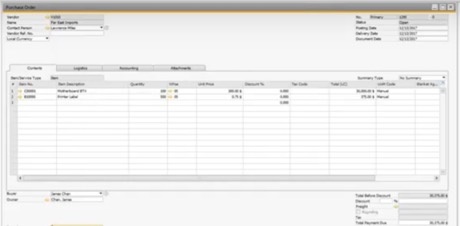Integration: Full Up and Certified Using APIs vs. Data Import Tools
In the realm of Small and Medium Enterprises (SME) Enterprise Resource Planning (ERP) systems, the demand for third-party software solutions is continually growing. SMEs seek tools that can address specific needs without the complexity and cost of comprehensive ERP systems. One critical aspect of developing these solutions is the method of integration. While data import tools have been a staple, leveraging APIs—or in the SAP world, the Business Technology Platform (BTP)—offers a more dynamic and efficient approach. Here, we explore best practices for creating third-party software for SME ERPs.
Focus on Niche Functionality
When developing third-party software for SMEs, it’s essential to focus on niche functionality. Instead of attempting to be an all-encompassing ERP solution, target specific pain points that SMEs face. This could include industry-specific requirements, specialized reporting, or advanced analytics tailored to their unique operations. By zeroing in on these areas, you not only differentiate your product but also provide tangible value that can streamline SME operations.
Prioritize User-Friendliness
One of the most critical factors for SME software adoption is user-friendliness. SMEs often lack the extensive IT resources that larger enterprises have, meaning the end users might not have advanced technical skills. Ensure your software is intuitive and easy to learn. Clear, concise documentation, user-friendly interfaces, and comprehensive support are key components. Remember, the goal is to make the software accessible to all users, regardless of their technical background.
Offer Seamless Integration
Integration is a cornerstone of any successful third-party software for ERP systems. Your software should integrate seamlessly with other popular ERP solutions used by SMEs. This is where APIs and platforms like SAP’s Business Technology Platform (BTP) come into play. APIs provide a robust way to connect different systems, enabling real-time data exchange and automation. SAP BTP, on the other hand, offers a comprehensive suite of tools for building and extending applications, making it easier to create integrated solutions that leverage SAP’s powerful ecosystem.
Using APIs or SAP BTP ensures that your software can communicate effectively with existing ERP systems, reducing the need for manual data entry and minimizing errors. This seamless integration enhances productivity and allows SMEs to focus on their core business activities.
Ensure Affordability
SMEs operate with tight budgets, so affordability is a critical consideration. Your pricing model should be competitive and scalable to accommodate businesses of different sizes. Consider offering subscription-based models, which provide a lower entry cost and predictable ongoing expenses. Freemium models can also be effective, allowing SMEs to try basic features for free and upgrade to premium versions as their needs grow. Transparency in pricing and providing clear value for money will build trust and encourage adoption.
Conclusion
Creating third-party software for SME ERP systems requires a focus on niche functionality, user-friendliness, seamless integration, and affordability. By leveraging APIs or platforms like SAP’s BTP, you can ensure your software integrates smoothly with existing systems, providing significant value to SMEs. As the demand for specialized, cost-effective ERP solutions grows, adhering to these best practices will position your software as a preferred choice among SMEs, helping them streamline operations and achieve their business goals.
By following these best practices, developers can create effective and efficient third-party software solutions that not only meet the unique needs of SMEs but also enhance their overall operational efficiency.



